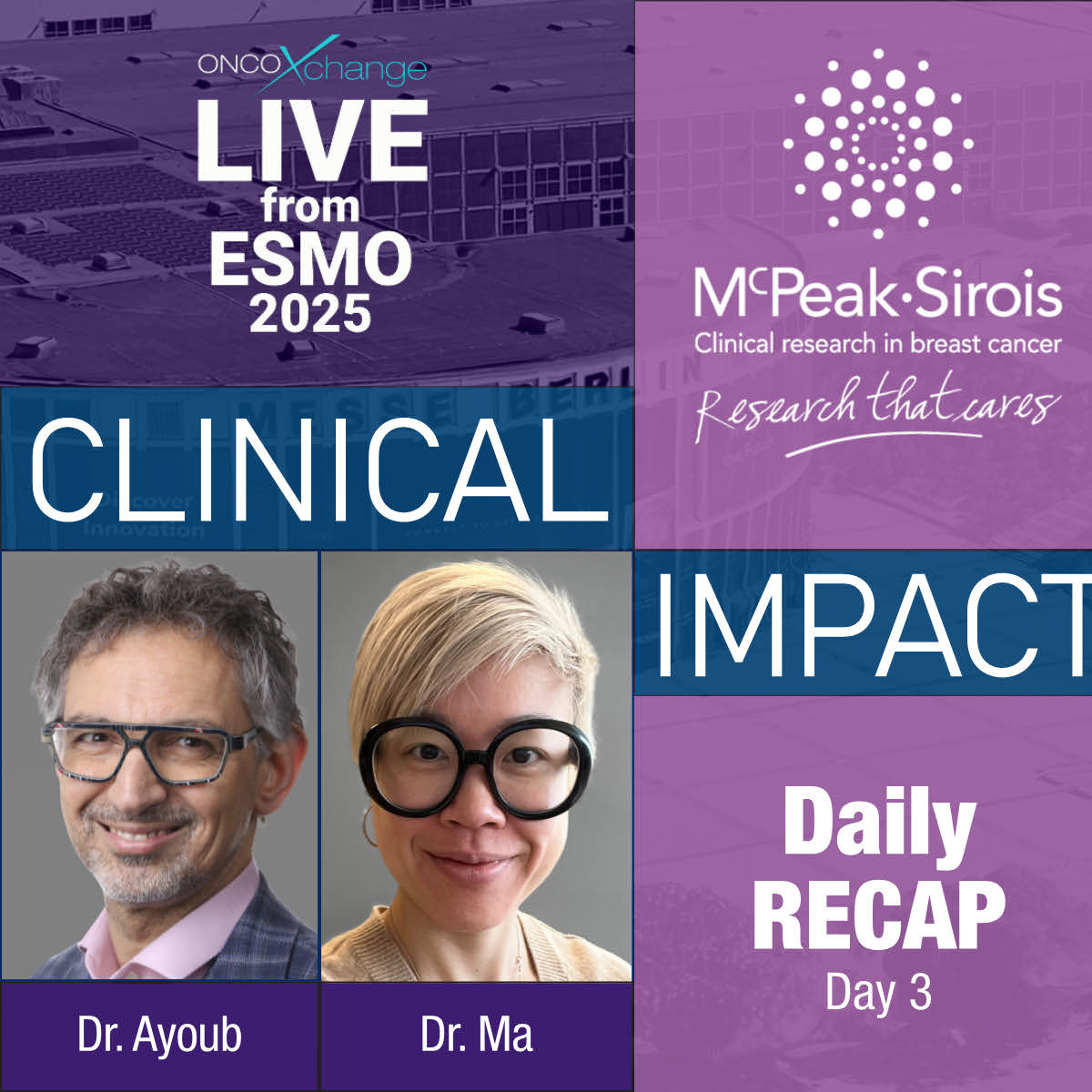
Neoadjuvant pembro added to chemo improves pCR rates in TNBC subgroups
December 2019
By Wayne Kuznar for oncoXchange.
Subgroup analysis of the KEYNOTE-522 trial demonstrates that neoadjuvant treatment with the combination of pembrolizumab and chemotherapy had a larger magnitude of effect on pathologic complete response (pCR) compared with chemotherapy alone in patients with stage III and/or node-positive early triple negative breast cancer (TNBC).
A larger magnitude of benefit of the neoadjuvant combination on pCR was also observed in patients who received less than planned full-dose chemotherapy and regardless of the PD-L1 expression threshold, said Peter Schmid, MD, at the 2019 San Antonio Breast Cancer Conference.
The phase III KEYNOTE-522 trial randomized patients with newly diagnosed TNBC with T1c/N+ tumors or T2-4 tumors irrespective of nodal status in a 2:1 ratio to receive pembrolizumab, 200 mg every 3 weeks, or placebo. All patients received 12 weeks of carboplatin plus paclitaxel followed by 12 weeks of doxorubicin or epirubicin plus cyclophosphamide. Following surgery, adjuvant pembrolizumab or placebo was continued for a total duration of 1 year. The study had dual primary endpoints: event-free survival (EFS) and pCR, which was defined as ypT0/Tis or ypN0. Of those enrolled, tumor stage ranged from T1c N1/N2 to T2 to T4 and N0 to N2. Patients were evenly stratified between groups based on nodal status, tumor size, and carboplatin schedule (weekly versus every 3 weeks).
The intent-to-treat population for pCR analysis included 602 patients. Some 83% were PD-L1-positive and about half had nodal involvement. Carboplatin schedule was weekly in about 41% of patients and every 3 weeks in about 59%.
As previously presented, pCR was achieved in 64.8% of the pembrolizumab/chemotherapy arm and 51.2% of the placebo/chemotherapy arm (P = 0.00055). The first pre-planned analysis for EFS at 15.5 months showed (in the total study population of 1,174 patients) did not reach the prespecified boundary for significance, which was set at P = 0.000051). The hazard ratio at this time point was 0.63 in favor of pembrolizumab.
By disease stage, pCR rates “it was evident that patients in all subgroups derived a benefit from pembrolizumab,” said Dr. Schmid, professor of cancer medicine, the Barts Cancer Institute, Queen Mary University, London, U.K. “Of note, patients with higher stage IIIA and stage IIIB seemed to have a higher delta of about 25% increase in pCR rates with the addition of pembrolizumab to chemotherapy.”
In stage IIIA patients, the improvement in pCR with the addition of pembrolizumab went from 42.1% to 66.7%, and in stage IIIB patients, from 23.1% to 48.6%.
Similar results were observed by nodal status. In node-negative patients, pCR rate improved from 58.6% to 64.9% by adding pembrolizumab, and in node-positive patients, the pCR rate improved from 44.1% to 64.8%.
Positive PD-L1 status was not necessary for achievement of pCR.
PD-L1 expression was defined using the 22C3 assay using a cutoff of 1 for the composite positive score (CPS). Positive PD-L1 status was not necessary for achievement of pCR. Patients with PD-L1-negative tumors derived significant benefit from the addition of pembrolizumab, with an improvement in their pCR rate from 30.3% to 45.3%. Among those who were positive for PD-L1 expression, “the benefit [of pembrolizumab] is consistent with different definitions of CPS cutoffs, whether CPS of 1, CPS of 10, or CPS of 20,” said Schmid. More than 80% of patients with a CPS ≥20, 77.9% with a CPS ≥10, and 68.9% with a CPS ≥1 achieved pCR.
“My hypothesis will be that tumors that start as PD-L1-negative may turn PD-L1-positive as we treat them with immune therapy,” he said.
Patients who received 10 to 12 doses of paclitaxel, all doses of carboplatin, and all doses of cyclophosphamide and doxorubicin or epirubicin were considered to receive full-dose chemotherapy.
Overall, in the control arm, with reduced exposure to chemotherapy, the pCR rate was 35.7%, which improved to 51.1% in the pembrolizumab arm.
In the patients with full exposure (about 78% of the total cohort), pCR rates were 55.3% in the control arm and 69.7% in the pembrolizumab arm.
Neoadjuvant pembrolizumab plus chemotherapy was associated with a higher rate of a residual cancer burden score of 0 or I compared with placebo plus chemotherapy (74.1% vs. 63.6%).

Comments (0)